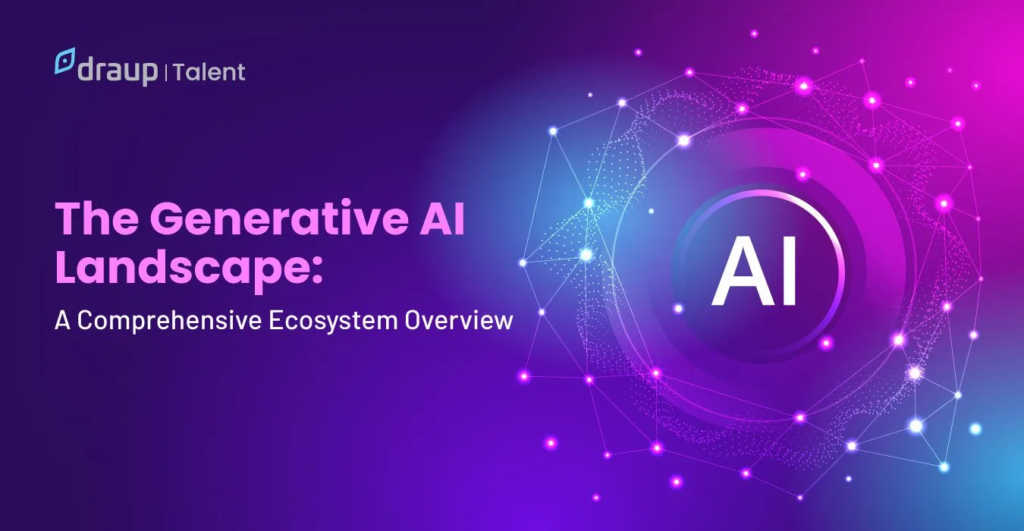Exploring the Generative AI Landscape with Draup

In today’s rapidly evolving technological landscape, generative AI stands out as a transformative force across various industries. Draup’s comprehensive whitepaper, “The Generative AI Landscape: A Comprehensive Ecosystem Overview,” delves into the intricate world of generative AI, presenting an extensive examination of its ecosystem, applications, and future potential.
Understanding Generative AI
Generative AI refers to algorithms that can generate new data based on the data they have been trained on. This technology is behind many of the advancements in AI, from creating realistic images and videos to composing music and writing text. Draup’s whitepaper provides an in-depth look at how generative AI is reshaping industries, driving innovation, and creating new business opportunities.
Key Components of the Ecosystem
The whitepaper highlights several critical components that constitute the generative AI ecosystem:
- Algorithms and Models: It discusses various generative models like GANs (Generative Adversarial Networks) and VAEs (Variational Autoencoders), which are the backbone of this technology.
- Data and Training: The importance of high-quality data and the methodologies for training these models are explored, emphasizing the need for robust datasets to achieve high performance.
- Tools and Frameworks: The document outlines the tools and frameworks available for developing generative AI applications, such as TensorFlow, PyTorch, and other AI platforms that facilitate model building and deployment.
- Applications: It provides insights into the diverse applications of generative AI, including content creation, healthcare, finance, and more. For instance, in healthcare, generative AI is used for drug discovery and creating synthetic patient data for research.
Industry Impact and Future Trends
Draup’s whitepaper also discusses the profound impact generative AI is having on various industries. For example, in the entertainment industry, generative AI is revolutionizing content creation by generating realistic animations and special effects. In the finance sector, it aids in risk assessment and fraud detection by analyzing and generating synthetic data.
The whitepaper predicts several future trends in the generative AI landscape:
- Increased Integration with Business Processes: Generative AI will become more embedded in business operations, enhancing decision-making and efficiency.
- Advancements in Model Interpretability: As the models become more complex, there will be a greater focus on making them interpretable and understandable to humans.
- Ethical and Regulatory Considerations: The rise of generative AI will bring about new ethical and regulatory challenges, necessitating the development of frameworks to address issues like data privacy and algorithmic bias.
Conclusion
Draup’s whitepaper, “The Generative AI Landscape: A Comprehensive Ecosystem Overview,” offers valuable insights into the transformative power of generative AI. By exploring the technology’s core components, applications, and future trends, Draup provides a roadmap for businesses and professionals looking to leverage generative AI in their operations. This comprehensive guide underscores the importance of staying informed and adaptable in the face of rapid technological advancements.






Responses